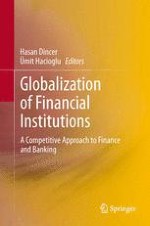2014 | OriginalPaper | Chapter
10. The Evolution of the European Union as a Trade Bloc
Author : Ebru Nergiz
Published in: Globalization of Financial Institutions
Publisher: Springer International Publishing
Activate our intelligent search to find suitable subject content or patents.
Select sections of text to find matching patents with Artificial Intelligence. powered by
Select sections of text to find additional relevant content using AI-assisted search. powered by
